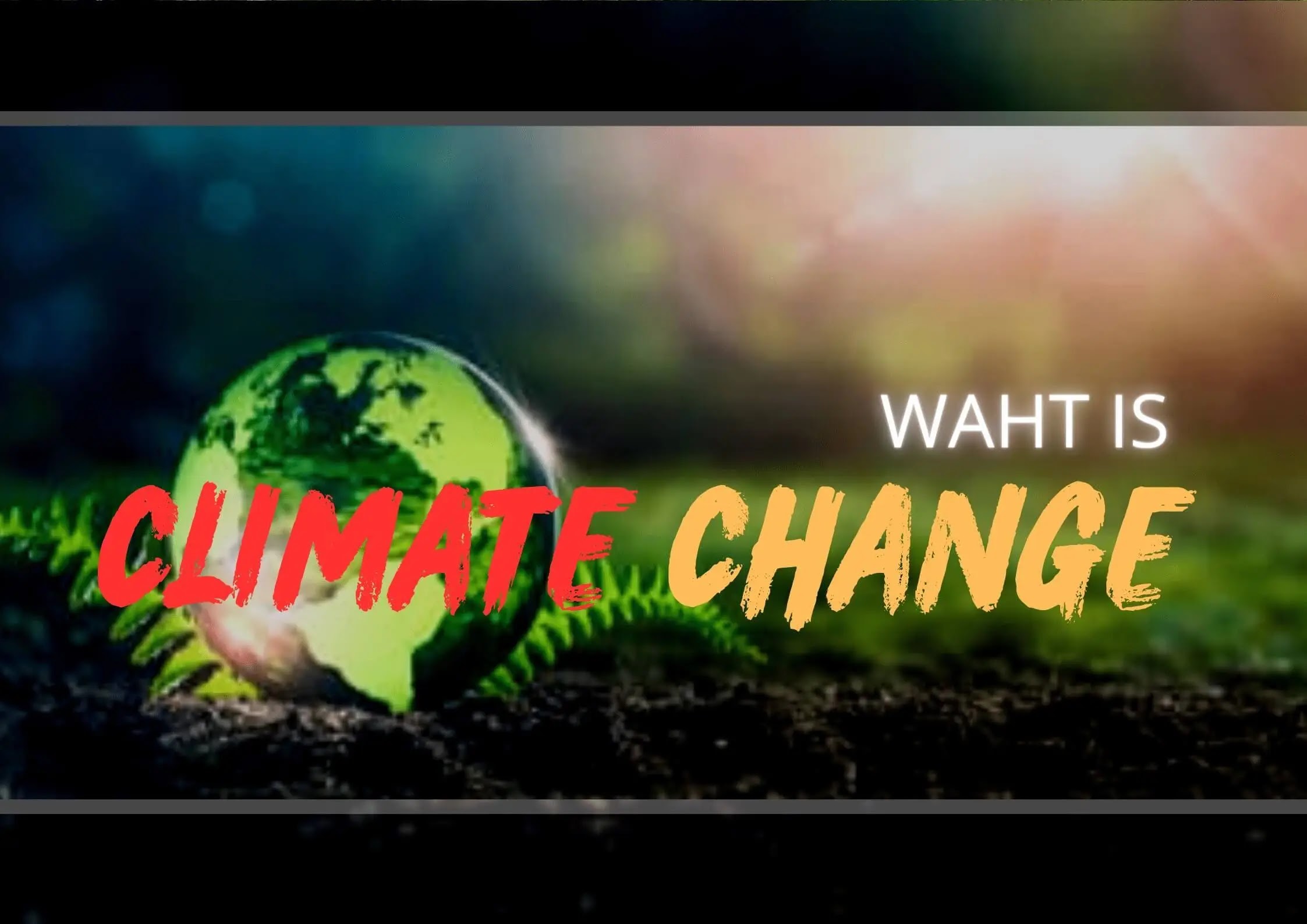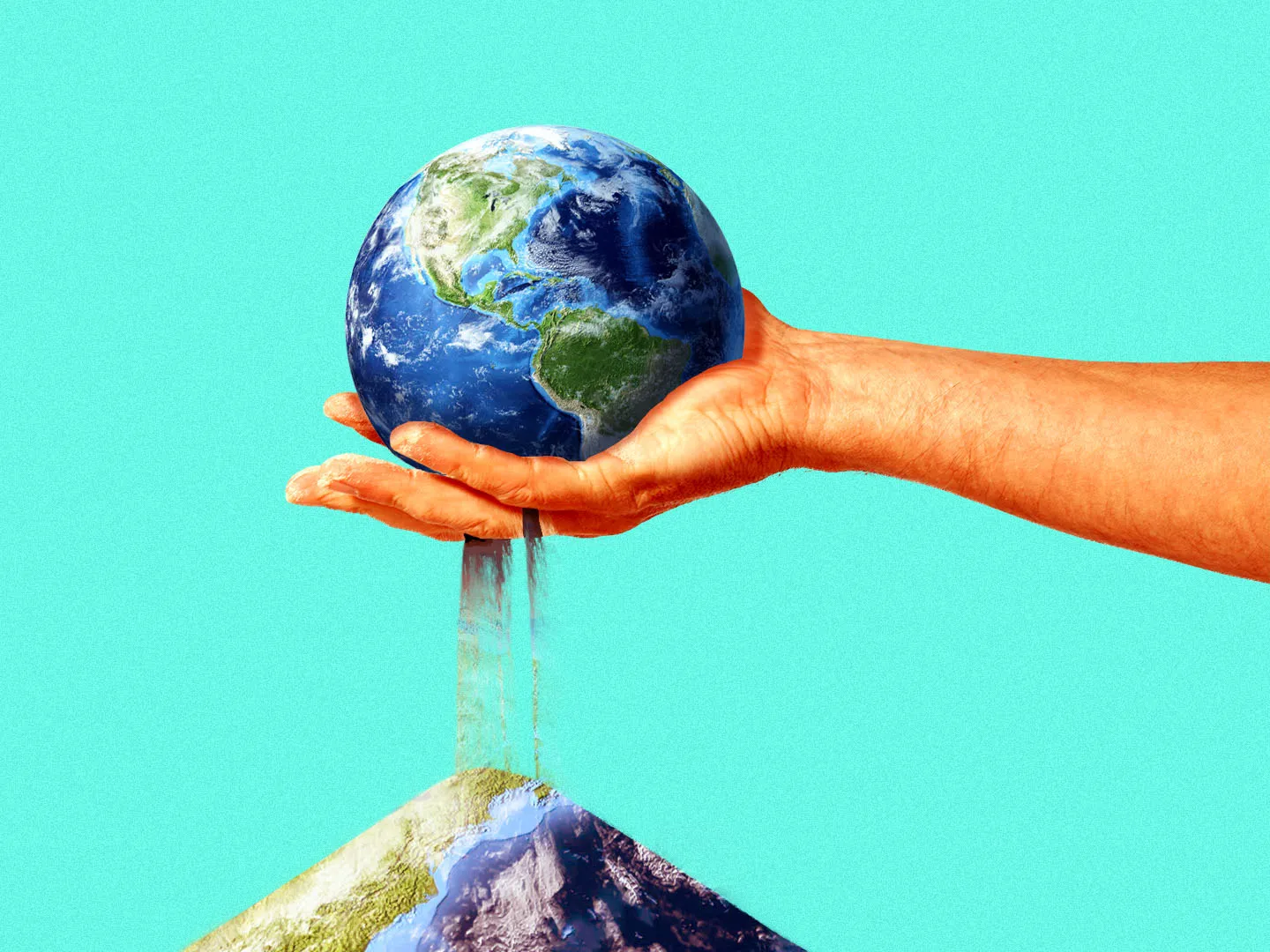Climate Change and Its Impact on the Planet
- Definition of Climate Change: Climate change refers to significant changes in global temperatures and weather patterns over time. While climate change occurs naturally, scientific evidence points to an accelerated rate due to human activities, particularly since the industrial revolution.
- Causes of Climate Change: Greenhouse gas emissions from burning fossil fuels, deforestation, industrial processes, and agricultural practices are the primary contributors to climate change.
- Importance of Understanding Impact: Understanding the impact of climate change is crucial for developing strategies to mitigate its effects and adapt to new environmental realities.
2. Causes of Climate Change
- Greenhouse Gas Emissions: Activities such as burning coal, oil, and natural gas release large amounts of carbon dioxide (CO₂) and methane (CH₄) into the atmosphere, trapping heat.
- Deforestation: Trees absorb CO₂, but deforestation for agriculture, logging, and urban development reduces this capacity, releasing stored carbon.
- Industrial and Agricultural Activities: Production processes and livestock farming also release greenhouse gases like methane and nitrous oxide.
- Other Factors: Factors such as urbanization and changes in land use contribute to the overall increase in global temperatures.
3. Impacts of Climate Change :Climate Change and Its Impact on the Planet
- Rising Temperatures: Global temperatures have been steadily increasing, with the last decade being the warmest on record. Higher temperatures lead to heatwaves and impact ecosystems, agriculture, and human health.
- Melting Ice Caps and Rising Sea Levels:
- Melting Polar Ice and Glaciers: Ice loss in polar regions and mountain glaciers contributes to rising sea levels.
- Rising Sea Levels: Coastal areas are at risk of flooding, which threatens biodiversity, human settlements, and freshwater supplies.
- Extreme Weather Events: Climate change increases the frequency and intensity of extreme weather events such as hurricanes, wildfires, droughts, and floods.
- Ocean Acidification: Increased CO₂ absorption by oceans makes them more acidic, affecting marine life, especially coral reefs and shellfish.
- Impact on Biodiversity: Many species face extinction as they cannot adapt quickly to changing temperatures or move to suitable habitats.
- Human Health Risks: Climate change exacerbates health issues, including respiratory illnesses, heat-related illnesses, and vector-borne diseases due to changing habitats for mosquitoes and other pathogens.
- Economic Impacts: Agriculture, tourism, fisheries, and many industries face risks, potentially leading to economic losses and affecting food security.
4. Regional Impacts of Climate Change :Climate Change and Its Impact on the Planet
- Arctic Region: The Arctic is warming faster than any other region, affecting polar bears, seals, and indigenous communities.
- Small Island Nations: Many small island nations face the threat of disappearing due to rising sea levels.
- Coastal and Low-Lying Areas: Coastal regions, particularly in countries like Bangladesh, face increased flooding and saltwater intrusion.
- Agricultural Regions: Droughts and changing weather patterns make farming more difficult, especially in regions heavily reliant on agriculture, such as parts of Africa, Asia, and South America.
5. Mitigation and Adaptation Strategies
- Reducing Emissions: Transitioning to renewable energy sources (e.g., solar, wind), improving energy efficiency, and adopting sustainable agricultural practices can reduce greenhouse gas emissions.
- Reforestation and Afforestation: Planting trees and restoring forests help absorb CO₂ and improve biodiversity.
- Conservation Efforts: Protecting vulnerable species and ecosystems helps maintain biodiversity and resilience.
- Infrastructure Adaptation: Building resilient infrastructure, such as seawalls and climate-smart agriculture systems, to adapt to changes.
- International Agreements: The Paris Agreement and other international efforts encourage countries to commit to lowering emissions and sharing technology and strategies.
6. Role of Individuals and Communities
- Personal Carbon Footprint Reduction: Using energy-efficient appliances, reducing meat consumption, and minimizing waste.
- Community Initiatives: Communities can organize tree-planting campaigns, promote recycling, and advocate for local policies supporting climate action.
- Education and Awareness: Educating others on climate change and sustainable practices is crucial for grassroots change.
Climate Change and Its Impact on the Planet
- Summary of Key Points: Climate change is a global crisis with widespread impacts on ecosystems, human health, economies, and societies.
- Call to Action: Mitigating climate change requires global cooperation, innovation, and commitment. By taking immediate and collective action, we can reduce the most severe impacts of climate change and build a sustainable future.
8. Case Studies on Climate Change Impacts
- Case Study 1: Australia’s Bushfires (2019-2020)
- Background: Australia experienced unprecedented bushfires fueled by record-breaking temperatures, drought, and strong winds.
- Impact: The fires destroyed millions of hectares of land, killed or displaced billions of animals, and severely impacted air quality. The economic cost was estimated in billions of dollars, and recovery efforts are ongoing.
- Lessons Learned: This event highlighted the vulnerability of ecosystems and communities to extreme heat and the need for improved fire management and climate adaptation plans.
- Case Study 2: Melting Glaciers in the Himalayas
- Background: The Himalayan glaciers are melting rapidly due to rising temperatures, which affects water supply to millions of people in South Asia.
- Impact: Melting glaciers contribute to flooding, landslides, and loss of water resources. This impacts agriculture, hydroelectric power, and drinking water for downstream populations.
- Lessons Learned: Adaptation efforts, such as water resource management and flood preparedness, are essential for countries dependent on glacial water.
- Case Study 3: Rising Sea Levels in the Maldives :Climate Change and Its Impact on the Planet
- Background: As a low-lying island nation, the Maldives is extremely vulnerable to rising sea levels.
- Impact: Rising sea levels threaten to submerge large portions of the Maldives, endangering lives, property, and local tourism-based economies. Some islands have already faced relocation efforts.
- Lessons Learned: International support, coastal defenses, and sustainable tourism practices are key to helping the Maldives adapt to climate threats.
9. Current Global Initiatives and Agreements
- The Paris Agreement (2015): A landmark international accord in which nearly every country agreed to take steps to limit global warming to below 2°C above pre-industrial levels, with efforts to keep it below 1.5°C. Each country commits to Nationally Determined Contributions (NDCs) to reduce emissions.
- The Intergovernmental Panel on Climate Change (IPCC): The IPCC provides scientific assessments on climate change, its risks, and mitigation strategies. It publishes influential reports that shape global climate policy.
- UN Sustainable Development Goals (SDGs): Several SDGs, including Climate Action (Goal 13), focus on addressing climate change and promoting sustainable development.
- Global Climate Summits (COP Conferences): These annual conferences bring together world leaders to negotiate and assess progress on climate commitments.
10. Future Projections and Potential Scenarios
- Global Temperature Increases: Without significant mitigation, global temperatures could rise by up to 4°C by the end of the century, leading to catastrophic impacts on ecosystems, human health, and economies.
- Projected Sea-Level Rise: Scientists project sea levels to rise by about 1 meter by 2100 if emissions continue at current rates, threatening coastal cities and island nations.
- Biodiversity Loss: It is estimated that up to one-third of all species could face extinction due to habitat loss, changing temperatures, and other climate-driven factors.
- Climate-Related Migration: Rising sea levels and extreme weather could displace millions of people, leading to climate migration. Countries will need strategies for addressing potential humanitarian crises associated with displaced populations.
11. Challenges in Combating Climate Change
- Political and Economic Barriers: Balancing economic growth with emissions reductions is a challenge for many countries, especially developing nations reliant on fossil fuels.
- Technological and Financial Constraints: Not all countries have access to advanced clean technologies or financial resources for adaptation.
- Global Coordination: Climate change requires global cooperation, but differing national interests can make unified action difficult.
- Public Perception and Misinformation: Misinformation about climate science can hinder progress, making public education and awareness essential for building support.
12. Innovative Solutions and Emerging Technologies
- Renewable Energy Advancements: Innovations in solar, wind, and hydroelectric power are reducing the cost of renewable energy and making it a viable alternative to fossil fuels.
- Carbon Capture and Storage (CCS): Technologies that capture CO₂ emissions from power plants and industrial facilities are being developed to reduce emissions directly.
- Sustainable Agriculture: Practices such as regenerative farming, precision agriculture, and crop diversification can improve resilience and reduce the carbon footprint of agriculture.
- Electric and Low-Emission Transport: Electric vehicles (EVs), improved public transport, and biofuels can significantly cut emissions from the transport sector.
- Smart Cities and Green Infrastructure: Urban planning that incorporates green spaces, energy-efficient buildings, and sustainable waste management systems can help cities reduce emissions and adapt to climate impacts.
13. Call to Action :Climate Change and Its Impact on the Planet
- Summary: Climate change is a complex, urgent global issue with far-reaching impacts on the environment, economies, and human societies. Addressing it requires a multifaceted approach involving governments, businesses, communities, and individuals.
- The Path Forward: While climate change presents unprecedented challenges, it also offers opportunities to rethink economic models, develop sustainable practices, and create resilient communities.
- Call to Action: Individuals and governments alike must commit to reducing their carbon footprints, supporting climate-friendly policies, and promoting innovations that protect the environment. Every small action contributes to a collective impact that can shape a sustainable future.
14. References
- IPCC Reports – Reference recent IPCC findings on climate science and projections.
- Scientific Journals and Articles – Cite studies on greenhouse gas emissions, biodiversity loss, and extreme weather events.
- Government and NGO Reports – Reports from organizations like the UN and WWF provide insights into global climate initiatives.
- Case Study Sources – If specific data is available on Australia’s bushfires, Himalayan glaciers, or the Maldives, include these sources for more detailed analysis.


